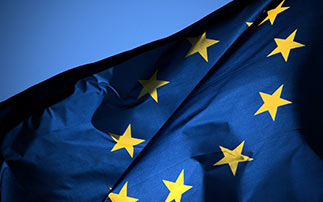The Multiannual Financial Framework (MFF) for the programming period 2021-2027 has been voted. It defines the budget allocated to the different actions that the European Union will carry out over this period. This budget will then be distributed, according to the priorities defined by the European authorities, over the different funds and instruments.
The European Union’s priorities
In order to give direction to the projects that the EU will fund, strategies are developed by the institutions. The official EU priorities are then chosen for a period of 5 years.
For the period 2019-2024, the 6 main EU priorities are:
- A European Green Deal
- A Europe fit for the digital age
- An economy that works for people
- A stronger Europe in the world
- Promoting our European way of life
- A new push for European democracy
The types of projects that EU funds can finance
Research projects, infrastructure projects, service projects, humanitarian projects, etc., there are many different types of action that the EU can finance. It does so through its various funds covering, by theme, different areas. Nevertheless, all co-financed projects must be in line with the European priorities and values that have been set.
Territorial development projects (Cohesion Policy)
In order to develop its territory, the EU has set up the Structural Funds to reduce inequalities in territorial development between the regions of the Member States.
- ERDF: the fund is open to a wide range of beneficiaries and themes such as innovation, SME competitiveness, or the transition to a low-carbon economy.
- EAFRD: it finances rural development projects to improve the competitiveness of agriculture by taking into account the issues of sustainable resource management and the fight against climate change.
- EMFAF: it funds projects for sustainable, innovative and competitive fisheries and aquaculture.
- Just Transition Fund: to counter the economic and social consequences that the ecological transition may have on certain territories, the FTJ supports industrial economies in order to modernise them, particularly in the areas of digital technology, energy technology, the rehabilitation of industrial sites and worker training.
Environmental and biodiversity protection projects
There are several funds that can address this theme:
- LIFE: It is the only fund entirely dedicated to the realisation of the European Green Deal, covering different themes such as nature, biodiversity, circular economy, climate change mitigation or the transition to cleaner and more sustainable energy.
- ERDF: the ERDF can also co-finance projects on environmental issues such as projects to reinforce green and blue belts.
- EAFRD: it finances agricultural development projects for rural and sustainable development.
Cultural and tourism projects
- Creative Europe: it funds projects in the fields of information and communication as well as culture and European languages.
- ERDF: projects supporting tourism businesses or co-financing tourism infrastructure.
Project to promote EU values
CERV – Citizens, Equality, Rights and Values programme: this fund co-finances projects on the protection and promotion of EU rights and values.
Projects with a social dimension: aid for integration, aid for the precarious or fragile public
- ESF+: with national and regional actions, the ESF+ aims to help people find a job and improve the quality of their employment, particularly for those who are vulnerable or far from employment.
- AMIF: the fund aims to strengthen the Common European Asylum System, support legal migration, promote fair and effective return strategies and share responsibility between Member States.
Health-related projects
- EU4Health: European programme to develop prevention projects, medical research and health-related resources.
- ERDF: part of the ERDF can also finance projects related to the health sector such as the creation or rehabilitation of health facilities.
- ESF+: ESF+ can co-finance projects, particularly those promoting access to medicine.
Research projects
- Horizon Europe: it co-finances collaborative projects. Project leaders form consortia on projects covering various fields. It can also provide grants for researchers.
- EU4Health: it can fund research projects in the field of health.
Projects related to education and dissemination of knowledge
- Erasmus +: in the field of education, training, youth and sport, Erasmus+ is the fund that finances collaborative projects between universities, student mobility, the creation of joint study programmes and staff mobility.
- ESF+: it can finance projects aimed at the inclusion of marginalised, vulnerable or unemployed people.
Economic development
- CEF: covering the areas of transport, energy and digital technology, this mechanism contributes to European economic development by increasing cooperation in these sectors.
- SMP: this programme aims to foster the transition to a more competitive economy, helping SMEs to grow and strengthen economic cohesion.
Digital-related projects
- Digital Europe: it aims to provide solutions for issues related to the digital transition. It can fund projects in the fields of AI, infrastructure connectivity, cybersecurity or data management.
- ERDF: projects aimed at supporting smart and digital territory strategies can obtain ERDF funding.
- ESF+: ESF+ can fund training in new digital tools.
Cooperation projects
NDICI – Global Europe: this fund finances actions outside the Member States, particularly in the fields of education and human development, climate change, the development of digital tools, the development of sustainable growth, particularly job creation, and the promotion of European values and the rule of law.
Thus, there are many areas that the European Union can finance through different funds and financial instruments. Each fund has its own particularities and it is therefore important to know what they are and what actions can be co-financed.


